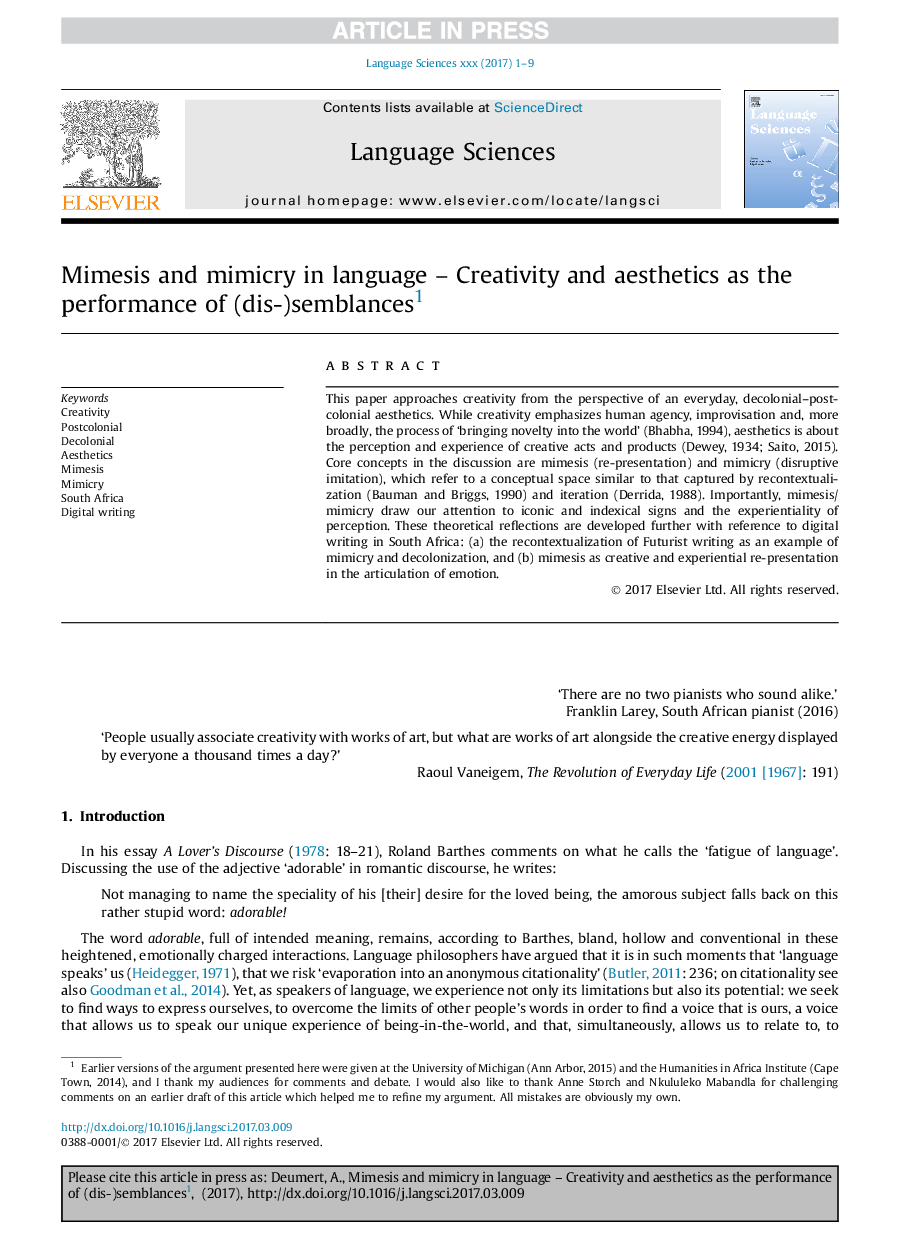| Article ID | Journal | Published Year | Pages | File Type |
|---|---|---|---|---|
| 7533825 | Language Sciences | 2018 | 9 Pages |
Abstract
This paper approaches creativity from the perspective of an everyday, decolonial-postcolonial aesthetics. While creativity emphasizes human agency, improvisation and, more broadly, the process of 'bringing novelty into the world' (Bhabha, 1994), aesthetics is about the perception and experience of creative acts and products (Dewey, 1934; Saito, 2015). Core concepts in the discussion are mimesis (re-presentation) and mimicry (disruptive imitation), which refer to a conceptual space similar to that captured by recontextualization (Bauman and Briggs, 1990) and iteration (Derrida, 1988). Importantly, mimesis/mimicry draw our attention to iconic and indexical signs and the experientiality of perception. These theoretical reflections are developed further with reference to digital writing in South Africa: (a) the recontextualization of Futurist writing as an example of mimicry and decolonization, and (b) mimesis as creative and experiential re-presentation in the articulation of emotion.
Related Topics
Social Sciences and Humanities
Arts and Humanities
Language and Linguistics
Authors
Ana Deumert,
